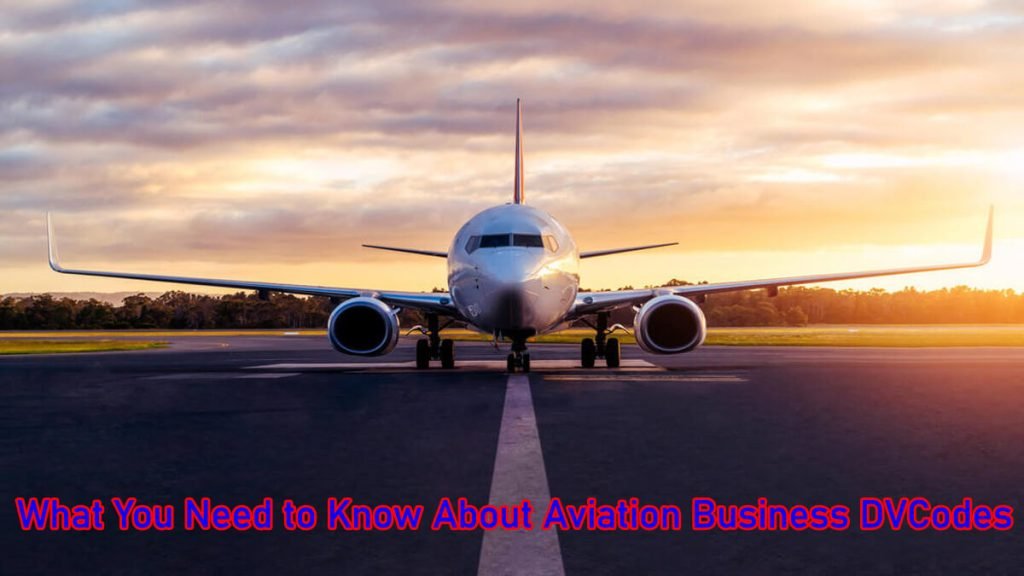What You Need to Know About Aviation Business Dvcodes! In the realm of aviation business, a powerful and intricate language exists, hidden from the eyes of passengers but crucial to the safe and efficient operation of aircraft. These silent communicators are known as DVCodes – a unique and complex system that fuels the aviation industry’s data-driven journey. In this article, we will unravel the mysteries of What You Need to Know About Aviation Business Dvcodes, exploring their significance, types, compliance, implementation, challenges, and future innovations. So fasten your seatbelts and prepare for a deep dive into the world of aviation’s digital language.
Table of Contents
Understanding Aviation Business DVCodes: The Heartbeat of Flight Operations
Importance of DVCodes in Aviation Business
Imagine DVCodes as the secret sauce that ensures seamless communication among aircraft, aviation operators, and control centers. These codes carry vital information, ranging from flight plans and maintenance records to safety protocols. In essence, DVCodes keep the aviation industry’s intricate machinery humming in harmony.
Decoding the Types of DVCodes
DVCodes aren’t a monolithic entity – they come in various flavors, each tailored to a specific purpose. Flight Operation DVCodes orchestrate the intricate dance of takeoffs, landings, and routes. Maintenance DVCodes meticulously document an aircraft’s health, while Safety DVCodes stand as sentinels, guarding against potential hazards.

Navigating the Regulatory Sky: Compliance and Standards
Adherence to Aviation Regulatory Standards
In the world of aviation, compliance isn’t optional; it’s the bedrock of safety and reliability. Regulatory bodies like the FAA and ICAO set the bar high, and DVCodes help businesses soar above it. These codes ensure that aviation companies operate within legal boundaries, preventing accidents and maintaining the industry’s reputation.
Implementation: Making DVCodes Soar
Implementing DVCodes requires more than a sprinkle of digital fairy dust. Airlines, maintenance providers, and tech-savvy aviation companies integrate DVCodes into their systems. Think of it as the aviation industry’s digital handshake – a secure way for information to be shared, ensuring consistency, accuracy, and compliance.
Turbulence Ahead: Challenges and Innovative Solutions
Challenges on the Flight Path of DVCodes
No journey is without its share of turbulence. When it comes to DVCodes, challenges like Data Integrity and Compatibility lurk like storm clouds. Ensuring that codes accurately represent information and that different systems can communicate seamlessly is no small feat.
Navigating the Clouds with Innovative Solutions
Yet, where challenges arise, solutions sprout wings. Data Validation Algorithms emerge as digital guardians, ensuring that data entered into the system aligns with reality. Standardized Coding Practices act as a universal language, ensuring that codes speak the same dialect across diverse systems.
Into the Horizon: Future Trends and Innovations
The Convergence of Aviation and Technology
The future beckons with promise, as technology and aviation become ever more intertwined. Artificial Intelligence (AI) emerges as a copilot, analyzing flight data to predict maintenance needs. Blockchain secures data like an unbreakable vault, ensuring its accuracy and transparency.
A Safer Sky: AI-Powered Predictive DVCodes
Picture AI as a wise and all-knowing navigator. By analyzing historical flight data, it can predict when an aircraft might need maintenance, reducing the chances of unexpected downtime. This predictive prowess reshapes aviation business strategies and enhances safety.
Case Studies: Real-World Applications of DVCodes
Case Study 1: Streamlining Maintenance
A leading airline leveraged DVCodes to optimize maintenance schedules. By analyzing maintenance data, they identified patterns and optimized when to perform checks. This smart move resulted in reduced downtime and significant cost savings.
Case Study 2: Preventing Engine Failures
Imagine an aircraft’s engine as its heart. DVCodes can predict when this heart needs attention. By analyzing engine performance, airlines can preemptively address issues, preventing costly and potentially dangerous engine failures.
Conclusion: Flying High with DVCodes
In conclusion of What You Need to Know About Aviation Business Dvcodes, In the vast expanse of the aviation industry, where precision and safety reign supreme, DVCodes are the unsung heroes. These codes underpin the industry’s operations, ensuring compliance, efficiency, and reliability. As aviation and technology continue to evolve, DVCodes will remain the North Star, guiding the industry toward a safer, more efficient, and interconnected future.
FAQs About What You Need to Know About Aviation Business Dvcodes
What are DVCodes in aviation, and why are they important?
DVCodes are standardized codes used to facilitate seamless communication and data exchange in the aviation industry, ensuring safety and efficiency.
How do DVCodes contribute to regulatory compliance?
DVCodes help aviation businesses adhere to stringent regulatory standards set by authorities like the FAA and ICAO, fostering safety and legal compliance.
Can you provide an example of how DVCodes enhance efficiency?
Certainly! Airlines use DVCodes to predict maintenance needs, optimizing schedules and reducing downtime, resulting in cost savings.
What role does AI play in the future of DVCodes?
AI acts as a predictive co-pilot, analyzing flight data to anticipate maintenance requirements, enhancing safety and operational efficiency.
How do DVCodes address challenges like data integrity?
Innovative data validation algorithms ensure that the information represented by DVCodes accurately reflects reality, maintaining data integrity.
What’s the significance of standardized coding practices in aviation DVCodes?
Standardized coding practices ensure that DVCodes are universally understood across different systems and platforms, fostering interoperability.
How do DVCodes contribute to preventing engine failures?
By analyzing engine performance data, DVCodes can predict and prevent potential engine failures, enhancing aircraft safety and reliability.

